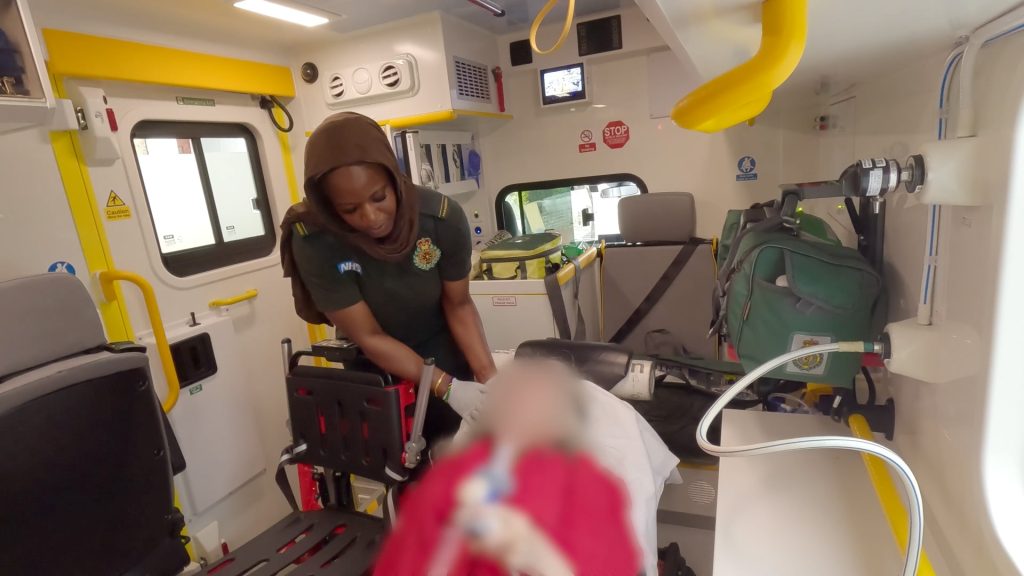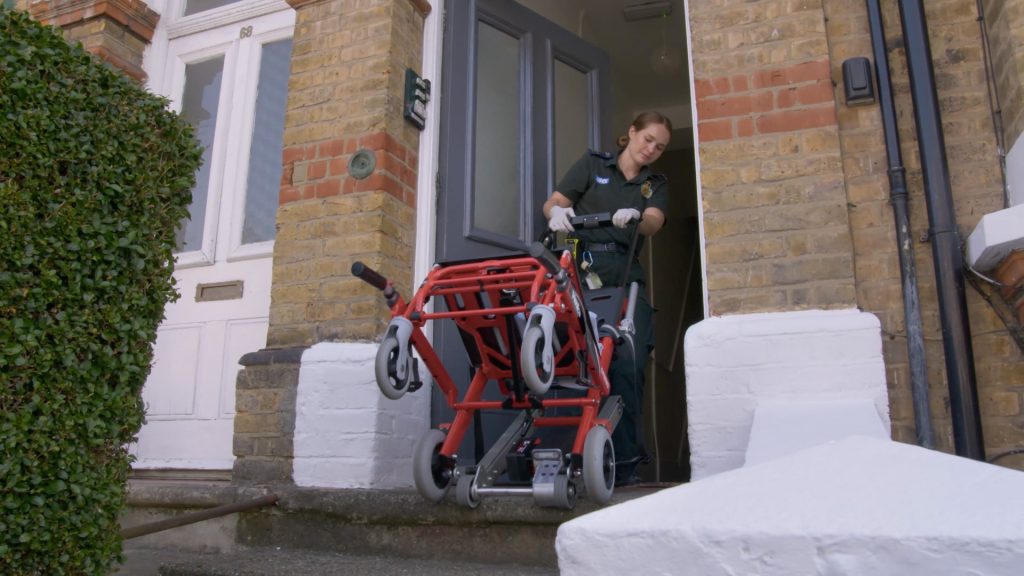New film follows London Ambulance Service paramedics as electric ambulance goes the distance
Film-makers followed ambulance crews as they responded to emergencies across London for two busy back-to-back shifts in a fully electric ambulance.
London Ambulance Service introduced the pioneering vehicle on its busiest night of the year – New Year’s Eve 2023 into New Year’s Day 2024.
To mark the vehicle’s first anniversary, a film crew from the manufacturer Ford joined its crew for a busy day and night shift, for an insight into life on the frontline in the capital.
Paramedic Molly Fisher – who was filmed with crewmate Holly Morgan for the night shift – said: “It’s nice to drive an electric vehicle that’s not polluting London and adding to the problem of poor air quality.
“And it has never run out of battery – that has never been an issue!”
The film crew followed the medical teams as they responded to a variety of 999 calls across central and south east London. These included a boy having a seizure, a badly injured cyclist, a 90-year-old who had fallen, a suicidal patient and someone who had collapsed and lost consciousness on a Friday night out.
Paramedic Himnah Kibuka worked the day shift with emergency medical technician Laura Nicholson.

Paramedic Himnah Kibuka worked the day shift with emergency medical technician Laura Nicholson.
She said: “This was a long shift, but no different from any other. At the end of the shift, we just plug the ambulance in until the next crew is ready to take it out.
“I don’t think we’ve ever gone below 50 per cent battery, and that’s on a 12-hour shift”
It takes around 30 minutes to fully re-charge an electric ambulance and the charging happens while it is being cleaned and re-stocked or at hospitals while the clinicians hand over their patient.
It costs 7p a mile in electricity to run compared to 27p a mile to run the same sized diesel ambulance.
Based on an average 30,000 miles a year, the electric ambulance costs £2,100 to run compared to £8,100 for a diesel ambulance in the same model.

The electric ambulance is quicker and cheaper to service than the diesel because it requires no oil and filter change. And in its first full year the ambulance had no breakdowns and the electric components had no faults – meaning more time on the road to respond to patients.
London Ambulance Service has two electric ambulances with two more arriving this month and a further five expected to join the fleet in autumn. It also has 42 fully electric cars, 16 electric response vans and three electric motorbikes – all of which are driven by paramedics or specialist teams on the front line responding to patients.
There are a further 38 electric vehicles for teams working behind the scenes.
Daniel Elkeles, Chief Executive of London Ambulance Service, said: “An electric ambulance produces zero emissions while driving which makes a difference to air quality in London.
“Air pollution can cause and exacerbate health conditions including cardiovascular and respiratory diseases – particularly in children and other vulnerable people.
“Our electric fleet is good for public health, good for the planet and good for the purse by saving the tax-payer money on running costs.”

Follow us on social media: